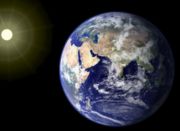Difference between revisions of "Fundamental resources"
| (52 intermediate revisions by 2 users not shown) | |||
| Line 1: | Line 1: | ||
| − | + | {{portalpage}} | |
| + | <!-- ****** TOP FRAME ****** --> | ||
| + | <div style="float:right; width:100%;"> | ||
| + | {{frame1|Intro}} | ||
| + | </div> | ||
| − | = | + | <!-- ******* START OF LEFT COLUMN ******* --> |
| − | + | <div style="float:left; width:50%;"> <!-- This width add to the the margin below to equal 100%--> | |
| − | + | {{frame1|Sections}} | |
| + | {{frame more1|Material}} | ||
| + | {{frame more1|Information}} | ||
| + | </div> | ||
| − | * | + | <!-- ******* START OF RIGHT COLUMN ******* --> |
| − | * | + | <div style="float:right; width:49%"> <!-- This margin should be right of the above --> |
| − | * | + | {{frame more1|Energy}} |
| − | * | + | {{frame more1|Human intelligence}} |
| − | * | + | {{frame more1|Machine intelligence}} |
| − | * | + | </div> |
| + | {{portalpageend}} | ||
| − | + | = Important secondary (derived) resources = | |
| + | {{portalpage}} | ||
| + | <!-- ******* START OF LEFT COLUMN ******* --> | ||
| + | <div style="float:left; width:50%;"> <!-- This width add to the the margin below to equal 100%--> | ||
| + | {{frame more1|Food}} | ||
| + | </div> | ||
| − | + | <!-- ******* START OF RIGHT COLUMN ******* --> | |
| + | <div style="float:right; width:49%"> <!-- This margin should be right of the above --> | ||
| + | {{frame more1|Water}} | ||
| + | {{frame1|See also}} | ||
| + | </div> | ||
| + | {{portalpageend}} | ||
| − | + | {{quick tour|Advanced automation|Post-scarcity}} | |
| − | + | {{detailed tour|Automated infrastructure|Material}} | |
| − | + | ||
| − | + | ||
| − | + | ||
| − | + | ||
| − | + | ||
| − | + | ||
| − | + | ||
| − | + | ||
| − | + | ||
| − | + | ||
| − | + | ||
| − | + | ||
| − | + | ||
| − | + | ||
| − | + | ||
| − | + | ||
| − | + | ||
| − | + | ||
| − | + | ||
| − | + | ||
| − | + | ||
| − | + | ||
| − | + | ||
| − | + | ||
| − | + | ||
| − | + | ||
| − | + | ||
| − | + | ||
| − | + | ||
| − | + | ||
| − | + | ||
| − | + | ||
| − | + | ||
| − | + | ||
| − | + | ||
| − | + | ||
| − | + | ||
| − | + | ||
| − | + | ||
| − | + | ||
| − | + | ||
| − | + | ||
| − | + | ||
Latest revision as of 17:23, 28 December 2012
|
So what have we got to work with? Mankind's fundamental resources are material, energy, intelligence and information. In reality they are all so enormously abundant that it's incredible to think that there are people in this world who are still going without the basic human necessities.
In the past a lack of technology could be considered a significant cause of scarcity but that is certainly not a reason any more. Despite common perceptions, there is no actual lack of material or energy available to us. Emerging methods of co-operation and advanced automation have the potential to unlock these resources to provide a good standard of living in all parts of the world, while causing minimal harm to the natural environment - a combination that although is hard to imagine today and might appear at first glance to be contradictory, is very much possible. An important trend in technological progress is the tendency of products and processes to steadily become more effective while using less material and energy – i.e. doing more with less – something that Buckminster Fuller
Air, water and the twenty most abundant elements in the Earth's crust provide almost all the material needed to create the multitude of machines and goods that mankind requires: food, drugs, houses, vehicles, robots, industrial machinery, computers, consumer goods and so on.
Extracting these plentiful elements (and their compounds) to create useful material essentially involves energy (which is also plentiful) and the right processing methods. From a technical point of view there is practically no limit to the volume of material we could extract and make use of, if we so wished, even while minimally disrupting complex and fragile ecosystems. The reserves of raw materials needed to sustain civilisation are simply not going to run out, because the entire Earth's crust The point is that any existing material scarcity actually has little to do with the reserves at our disposal. 
There has never been more information freely available than there is now. We are now at a phase of civilisation where information costs almost nothing to reproduce or transmit. It is so abundant and readily available that it is finding useful and accurate information that has become the important thing.
One significant aspect is that information can now completely describe the physical structure of man-made items, and can be communicated to automated fabrication machines which can then manufacture the product, reducing the requirement to transport material goods great distances to the end user, as happens generally now. Most of the journey will effectively be spent as information travelling at the speed of light. (See section on turning virtual designs into physical objects).  Humanity consumes 15 terawatts of energy[1] and this is projected to rise to about 30 terawatts. This is a tiny amount of energy compared to what is available around us: 72 terawatts of available wind energy at ground level[2], 150 terawatts in the jet streams[3], 44.2 terawatts of geothermal energy [4], 2 terawatts of easily-exploitable wave power[5] and 174,000 terawatts of solar energy[6]. We clearly have tens of thousands of times the energy we need, the key is our ability to harness this energy. This article explores existing and emerging technologies for doing this. Steadily increasing energy efficiency The issue currently is monetary economics. The bottom line is that with the current economic framework it is still 'cheaper' to pump oil out of the ground and burn it to produce power than use other more plentiful, renewable and environmentally benign sources. These alternative energy sources are sitting right in front of us waiting to be harnessed. It may be that open-source methods can bypass the incumbent economic system to enable plentiful, environmentally-friendly power.
Some people may suggest this as the one fundamental resource that really is in short supply...
We just haven't been using it as efficiently as we could be. Currently with activities such as design and engineering only relatively small groups of people collaborate in any meaningful way. Research and development — whether of scientific projects, products, services, or modern business processes — is usually done behind closed doors and the results carefully hidden. This leads to reduplication of effort and of skilled cognitive work. As a result, progress is much slower than it could be. Problems such as a cure for cancer concern us all and it is a terrible waste to have multiple groups of scientists working on the problem in isolation from each other, hiding their results so that their company will profit when the solution is found.
 On the machine side, intelligence is increasing exponentially and should continue to do so for many years to come (see Moore's law
 ). Not only are the total number of information processing units multiplying rapidly, but the relative computing power of each one is increasing exponentially too. ). Not only are the total number of information processing units multiplying rapidly, but the relative computing power of each one is increasing exponentially too.
On top of that algorithms and programming techniques are improving all the time to make more effective use of the hardware, as are distributed computing  |
 [print version]
[print version]  [update]
[update]  [site map]
[site map]Important secondary (derived) resources
|
Many people believe that we are soon to face a global food shortage. Population is rising rapidly, with a billion people added in less than ten years. 40% of farming land has been depleted
 and rainforests have been cut down to make more room for farming. Farmers are moving into cities at the rate of over a million a week [7], and our appetite for meat is growing[8]. These trends means that food demand is rising, but there are fewer farmers to supply it, while the basis of our agricultural production is under strain. It would indeed seem that we are heading for a food crisis. and rainforests have been cut down to make more room for farming. Farmers are moving into cities at the rate of over a million a week [7], and our appetite for meat is growing[8]. These trends means that food demand is rising, but there are fewer farmers to supply it, while the basis of our agricultural production is under strain. It would indeed seem that we are heading for a food crisis.
But this story misses a key point: there are far better ways to produce food than the ones now in wide use. While it is true that conventional plough agriculture and monoculture is driving the world towards a food crisis, there are ways to grow food using very little land, very little labour and no pollution. The aim of this page is to explore these methods and show how they can comfortably sustain a growing population. Any food shortage is really a shortage of applying this know-how to food production. It is possible, with current know-how, to create a food-production system that can provide tens of billions of people with abundant, local, nutritious, tasty food, textiles and wood, while economizing water, restoring soil, building communities, saving energy, creating pleasing landscapes, preserving wilderness, stopping diseases, needing virtually no inputs and benefiting not just people, but the rest of the biosphere as well. With world population growing, demand for food (and hence water for farming
 ) expected to grow by 70% [9], rivers becoming polluted and one in eight people already without clean drinking water [10], some have warned that we are heading for a 'peak water' crisis with people lacking the necessary water to survive, and wars breaking out over the access to water supplies [11]. Already, about half of all infectious disease is caused by contaminated drinking water.
A grim picture, indeed. But fortunately, an entirely avoidable one. Water is one of the most abundant resources available to us on this blue planet. The only problem we may face is synthetic scarcity; this article aims to show that there is no real shortage of water, nor of techniques to purify and manage it. If we simply apply the water-management techniques — many of which are extremely simple, low-tech, low-cost things — we have all the water we could ever need. ) expected to grow by 70% [9], rivers becoming polluted and one in eight people already without clean drinking water [10], some have warned that we are heading for a 'peak water' crisis with people lacking the necessary water to survive, and wars breaking out over the access to water supplies [11]. Already, about half of all infectious disease is caused by contaminated drinking water.
A grim picture, indeed. But fortunately, an entirely avoidable one. Water is one of the most abundant resources available to us on this blue planet. The only problem we may face is synthetic scarcity; this article aims to show that there is no real shortage of water, nor of techniques to purify and manage it. If we simply apply the water-management techniques — many of which are extremely simple, low-tech, low-cost things — we have all the water we could ever need.  |
 [print version]
[print version]  [update]
[update]  [site map]
[site map]Quick tour:  previous page | next page
previous page | next page 
Detailed tour:  previous page | next page
previous page | next page 








